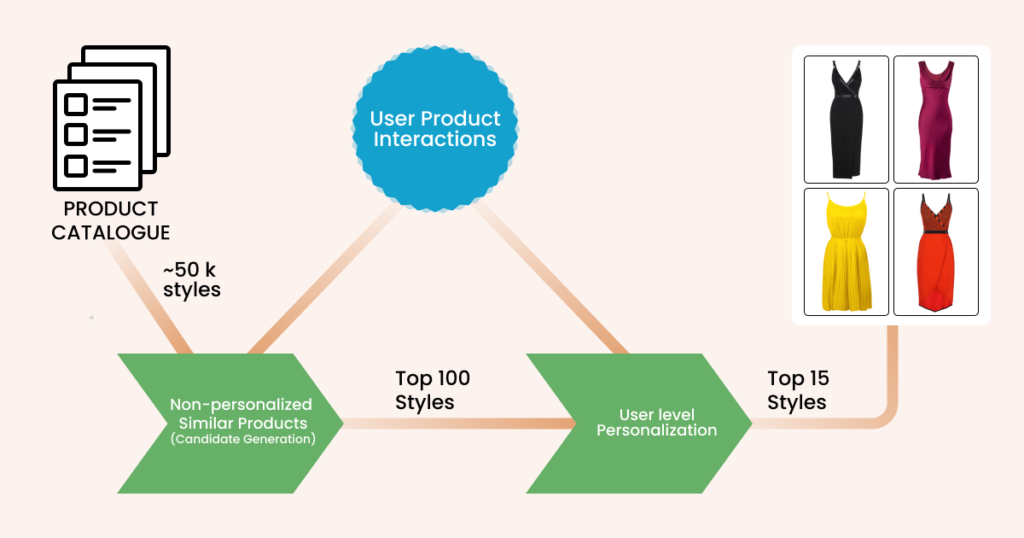Ever wondered why Amazon seems to read your mind? You open the app to buy a phone case, and suddenly you’re shown a perfect charger, screen protector, and even a phone stand you didn’t know you needed. This isn’t magic – it’s the power of the Amazon product recommendation algorithm. But what exactly is this algorithm? And more importantly, how can you beat it to make smarter buying decisions and avoid overspending?

In this post, we’ll break down how Amazon’s product recommendation algorithm works, and share clever ways to outsmart it. Whether you’re a savvy shopper or a curious marketer, this guide will give you a deeper understanding of what goes on behind the scenes of the world’s biggest online marketplace.
What Is the Amazon Product Recommendation Algorithm?
At its core, the Amazon product recommendation algorithm is a complex AI-driven system designed to increase sales by showing you the products you’re most likely to buy. It uses a combination of data science, machine learning, and behavioral analysis to make predictions about your shopping behavior.
Here are the key factors the algorithm considers:
- Browsing & Search History
Amazon keeps a close eye on what you search for, click on, and view – even if you don’t buy anything. Every action feeds the algorithm with insights about your interests. - Purchase History
Your past purchases are one of the strongest signals Amazon uses. If you’ve bought running shoes, it might recommend running socks, fitness trackers, or protein supplements. - Items in Your Cart or Wishlist
Even if you haven’t checked out, items in your cart or wishlist tell Amazon a lot about what you’re planning to buy. - Customer Behavior (Collaborative Filtering)
Amazon compares your activity with millions of other users. If people with similar shopping behavior also bought a certain item, Amazon is likely to recommend it to you. - Sponsored Listings
Not all recommendations are organic. Many are paid promotions by sellers. These sponsored listings are strategically placed in “Customers also bought,” “Recommended for you,” or “Sponsored products related to this item” sections.

Types of Amazon Product Recommendations
Amazon doesn’t use just one kind of recommendation. You’ll notice suggestions in various forms, each powered by a slightly different algorithm:
- Frequently Bought Together – Based on past purchase combos.
- Customers Who Viewed This Also Viewed – Encourages Exploration.
- Inspired by Your Browsing History – Tailored directly from your behavior.
- Recommended for You – Personalized based on your entire account activity.
- Sponsored Products – Paid ads that look like recommendations.
Why Amazon’s Recommendations Work So Well
Amazon has over 300 million active users and processes billions of data points every day. The more data it has, the more accurate its predictions become. Here’s why its algorithm is so effective:
- It learns continuously – Every click, scroll, and purchase helps improve suggestions.
- It builds user personas – Amazon creates a virtual profile of your preferences.
- It leverages Big Data – With access to massive amounts of data, Amazon can recognize patterns better than most platforms.
- It’s multi-layered – The algorithm uses natural language processing, deep learning, and predictive analytics to refine suggestions.
How to Beat the Amazon Product Recommendation Algorithm
Now let’s flip the script. If the algorithm is designed to make you spend more, how can you beat it and become a smarter shopper?
- Use Incognito Mode for Research
Before you start comparing products or checking reviews, open Amazon in an incognito or private browser tab. This prevents Amazon from tracking your searches and influencing your future recommendations. - Clear Browsing History
Amazon allows you to delete your browsing history. Head to your account > Browsing History and hit “Remove All Items” This resets your recommendations and gives you a clean slate. - Avoid Impulse Clicks
Every product you click signals interest. If you’re casually browsing, avoid clicking unless you’re serious about buying or comparing. Random clicks confuse the algorithm and can clutter your suggestions. - Use External Review Sites
Don’t rely solely on Amazon’s recommendations or customer reviews. Use third-party platforms like Wirecutter, TechRadar, or YouTube reviewers for unbiased comparisons & beat the Amazon Product Recommendation Algorithm. - Be Wary of Sponsored Products
Sponsored listings may not always be the best choice – they’re paid placements. Look for organically ranked products with genuine reviews, and double-check the seller’s credibility. - Create a Separate Account for Gifting
If you often shop for others (birthdays, holidays, etc.), consider creating a second Amazon account. This way, your gift purchases won’t mess up your personal recommendations. - Install a Price Tracker
Use tools like Keepa or CamelCamelCamel to track historical prices. Amazon’s product recommendation algorithm may recommend higher-priced products due to urgency or scarcity. Amazon Price Tracker reveals whether a deal is truly a bargain or a bluff.
How Sellers Use the Algorithm to Their Advantage
Understanding the Amazon product recommendation algorithm isn’t just for buyers – sellers also work hard to get their products featured in recommendations.
They do this by:
- Optimizing product listings with relevant keywords
- Running sponsored Ad campaigns
- Encouraging reviews and ratings
- Using A/B testing for images and copy
- Increasing sales velocity through limited-time offers
If you’re a seller, studying Amazon’s algorithm can help you improve your product visibility and increase conversions.
Final Thoughts
Amazon’s product recommendation engine is one of the most advanced in the e-commerce world. It’s built to make shopping easier – but also to subtly nudge you into buying more than you planned.
By understanding how the Amazon product recommendation algorithm works, you can make smarter decisions, save money, and avoid falling into the trap of algorithm-driven impulse buying.
Whether you’re a consumer looking to beat the system or a seller hoping to harness its power, knowledge is your best weapon. Stay informed, shop smart, and let the algorithm work for you, not against you!